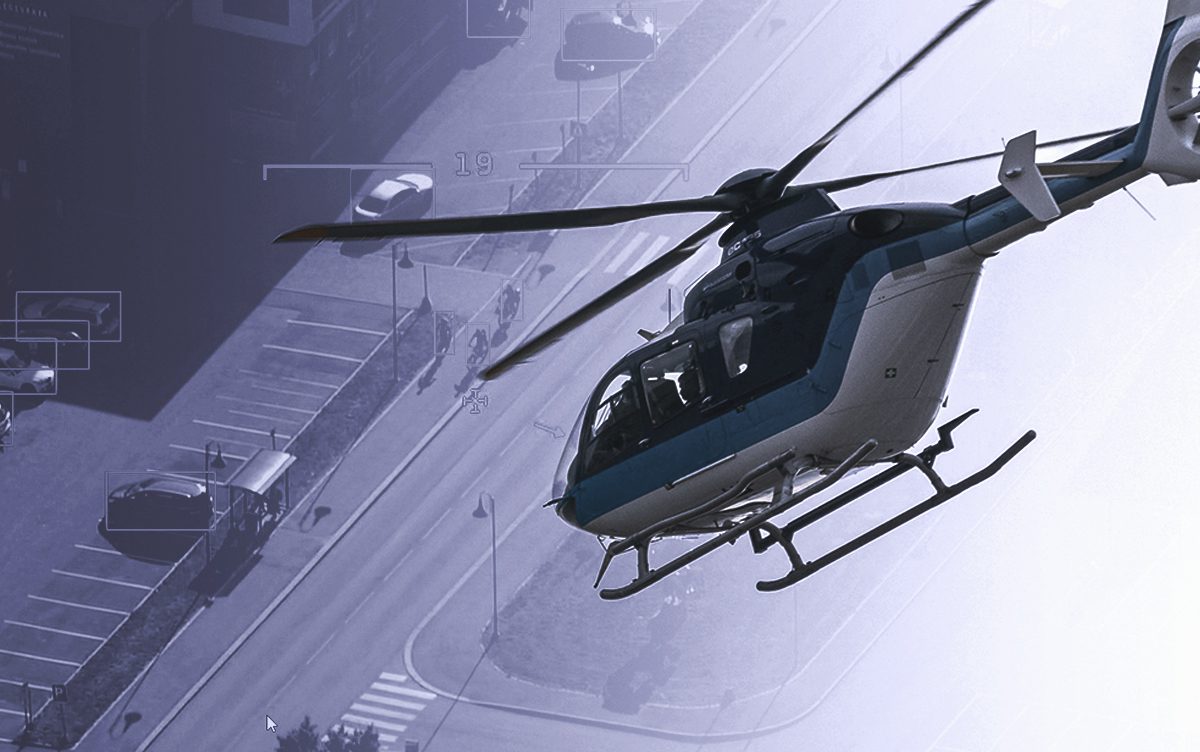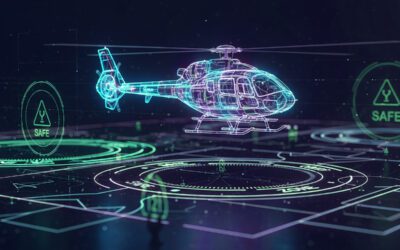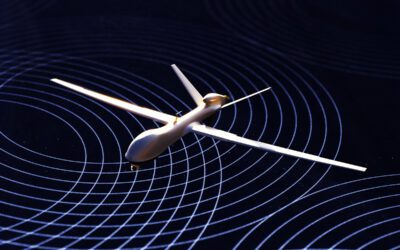AI has started to permeate into every aspect of our daily lives. From typing an email to talking to a utility company call centre ‘operator’, the rise of AI has been extraordinary. While some still have reservations about its use in critical areas, others can already see the potential for AI to work alongside human operators, not least in law enforcement. Artificial intelligence policing may be a contentious subject, but the truth is that using some form of AI police system is inevitable and could make the world a safer place for everyone.
In this article, we’ll discuss artificial intelligence in law enforcement and the many applications already in use in areas such as SAR and airborne surveillance, as well as data analysis. We’ll examine how police AI has been strongly influenced by the use of AI in the military and ask what the future holds for this technology. Keep reading to learn about FlySight’s unique solutions incorporating AI and AR to improve and enhance aerial operating platforms.
Artificial Intelligence in Law Enforcement – a necessary tool
From communications to data crunching, AI has obvious applications in almost every industry, including law enforcement. As soon as AI started to come online, the technology was embraced also by the police, who could immediately see its potential to aid human officers in the fight against crime.
For example, why use traditional paper records and messy ink pads to take a suspect’s fingerprints when the process can now be digitised? This allows fingerprint comparisons to be almost instantaneous rather than relying on hours of visual comparisons carried out by an officer.
AI has slowly infiltrated almost every element of modern law enforcement, including mobile units for activities such as licence plate recognition and driver identification, through to high-level surveillance.
Why use AI in policing?
Significantly, crime has gone high-tech, so the world’s modern police forces must be equipped to tackle such complex challenges as cybercrime and the activities of the Dark Web.
AI provides a practical solution to many of the issues facing modern policing. A single system can sift through information and data much quicker and more thoroughly than human officers (although there is the argument that human operators should continually monitor AI to prevent errors).
Examples of artificial intelligence in law enforcement
The theory behind using AI in police operations is obvious, but how is it being applied to the real world? Europol’s Innovation Lab is a prime example of artificial intelligence being used in law enforcement. This state-of-the-art lab uses AI to process vast amounts of data from European law enforcement agencies and other providers (while still complying with current GDPR requirements). The aim is to identify trends and patterns in criminal activity and predict what could be the next challenge to face law enforcement. Comparisons to the plot of the film ‘Minority Report’ are understandable, but the key element in all of this is that AI is being used as a tool, not as a primary source of law enforcement policy-making. The ultimate decisions are still and will always be made by human operators.
The latest digital fingerprinting systems use AI to analyse crime scene evidence, identifying suspects from existing databases far more quickly than a human operator could manage. Again, verification by human officers is a crucial element of the process.
The Mexican police in Chihuahua, Mexico, have constructed a huge tower that collates information from many different sources across the region, including licence-plate recognition cameras, CCTV, biometry sensors, drones and cameras to sift through billions of bytes of information in the push to eliminate the Cartels.
All of these examples rely on AI’s processing ability and machine learning functionality. Once again, though, it is important to emphasise that in all of these instances, AI is being used as another tool in law enforcement’s arsenal, alongside traditional policing techniques and within strict operational parameters.
One area of artificial intelligence policing that has been particularly successful is in its inclusion into aerial units such as police helicopters. AI can be easily grandfathered onto existing and familiar technology, as it is often integrated into an already operational system as software patches. AI in developments such as FlySight’s OPENSIGHT system enables operators to access multiple layers of data and overlay them onto a map to create a multi-dimensional landscape.
Artificial intelligence in law enforcement surveillance operations can also be enhanced, as AI can filter out ‘background noise’ data that could be confusing and fix on a target, even when mobile.
Other AI policing technologies could include computer vision for photos and videos, autonomous vehicles and aircraft, mission decision-making, report writing, data analysis, and instant analysis of body-cam footage. While autonomous vehicles may be a little further away than the other applications, the development of smart roads and the next generation of driverless technology may eventually see unmanned police cars on the streets.
However, police AI is restricted to a certain extent to data analysis duties. The importance of this role shouldn’t be underestimated, however. Every police force in the world relies on data to solve crimes, prevent the spread of criminal activity, and serve the public.
AI crossover technology from the military
Much of the artificial intelligence in law enforcement can trace its roots back to the military, where the use of AI and AR has transformed the modern armed forces. Applications such as intelligent command and control systems used to analyse data and enhance situational awareness have a natural crossover point from the two sectors, although, as ever with AI, it is used to augment human intelligence and streamline processing tasks rather than making autonomous operational decisions.
AI has a significant role to play in intelligence and surveillance. It can sift through enormous amounts of data in a fraction of the time it would take human operators to perform the same task by extracting the key data according to its parameters from the mountain of information or ‘background noise’.
As cybercrime becomes more prevalent, the ability to extract data from other platforms, such as social media and chat messaging services, can also allow law enforcement users to stay one step ahead of cybercriminals. Listening to enemy combatant ‘chatter’ has served the military well in many theatres. Now, law enforcement has the tools to do the same in the civilian arena.
AI in aviation applications – How FlySight is changing the landscape
All of these applications have provided particular benefits to aerial units, both in the military and the police, both for training and for operations. Compact operational controls that are already familiar to the user mean that AI and AR equipment training time is reduced, and the systems can be brought online much faster.
AI is a crucial feature of the FlySight OPENSIGHT platform, delivering usable technology and AI/AR that enables airborne units to operate far more efficiently. Over the last decade, OPENSIGHT has been developed using STANAG guidelines and regulations to create a multi-platform processing, exploitation and dissemination system. Not only does this particular AI application and approach to modern policing allow data to be collected, analysed and interpreted faster, but it also assists in the decision-making process both in the air and on the ground.
Using AI to assist in surveillance and other operations such as crowd management and SAR, law enforcement can make far more use of every minute spent in the air, ensuring that manpower and equipment are used efficiently and cost-effectively. In an age where police departments are strapped for cash and have limited resources, using artificial intelligence in law enforcement creates a more effective, leaner and more successful service.
To learn more about FlySight’s OPENSIGHT system, watch some of our videos and success stories, or contact us to discuss your needs today and discover more about our aviation systems, development tools, turnkey solutions, and plugins.




